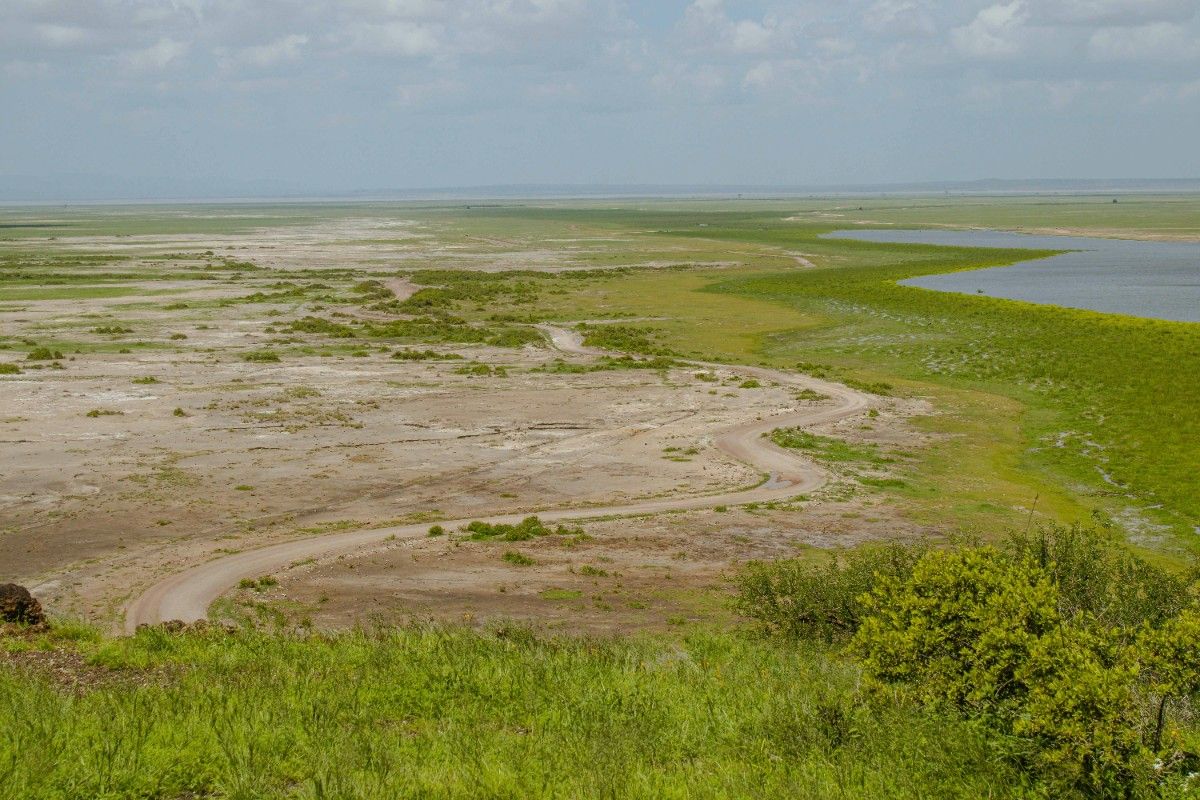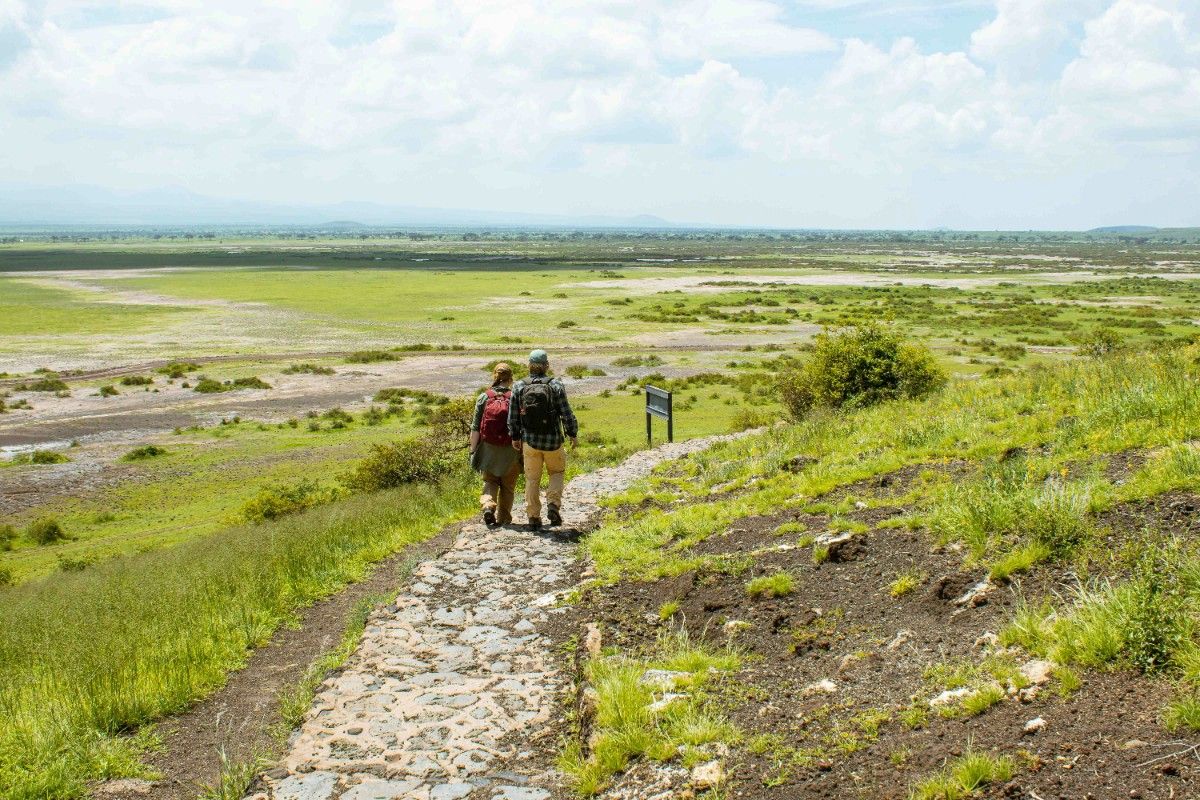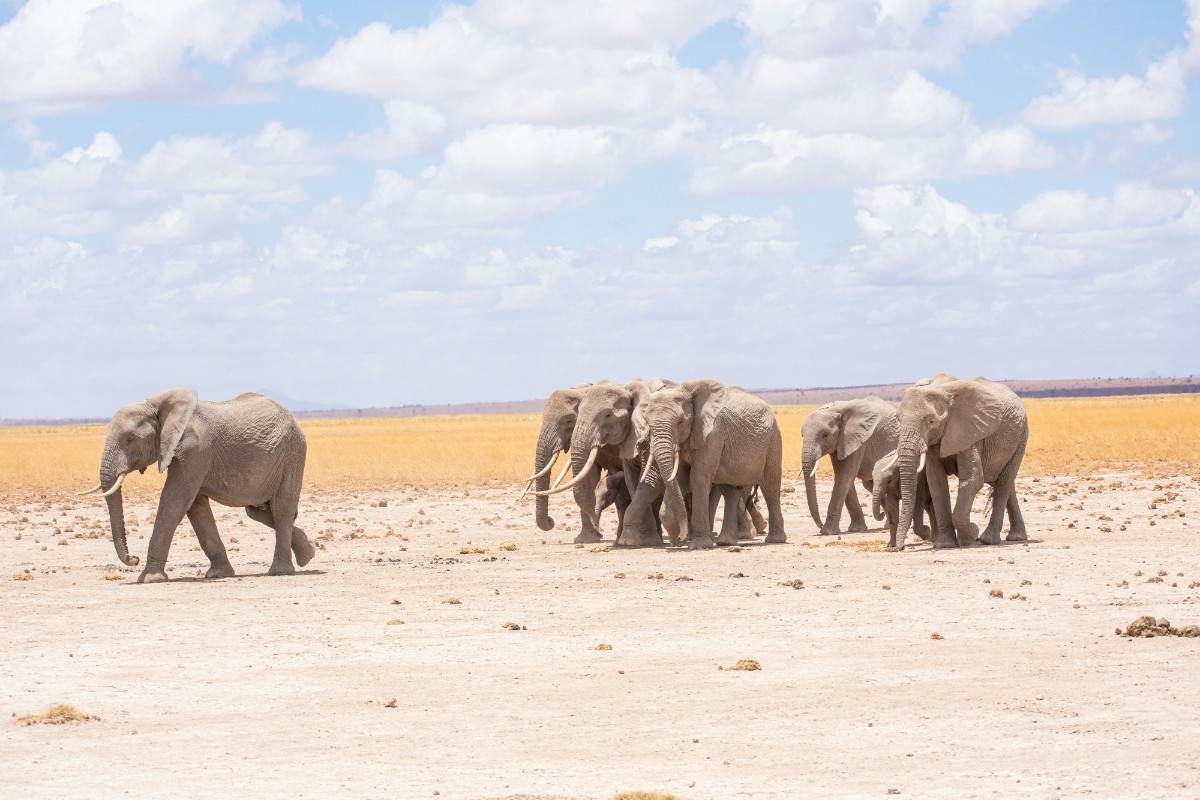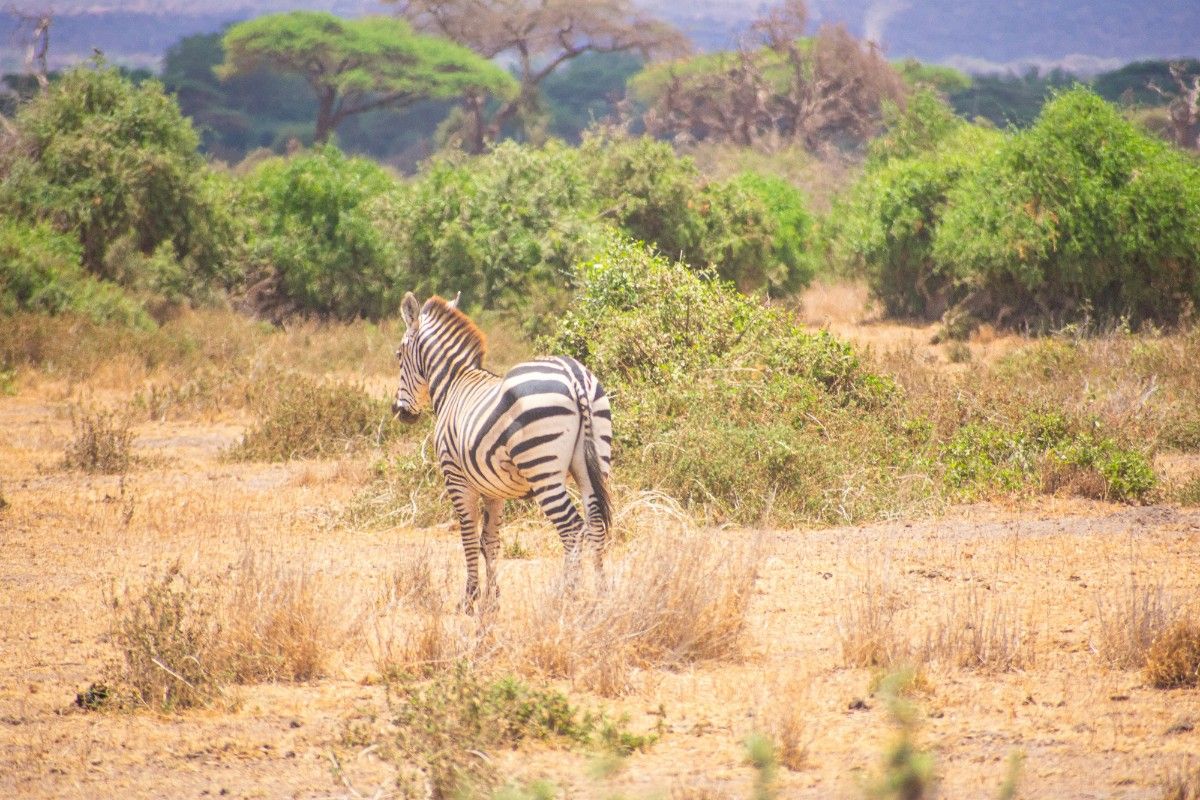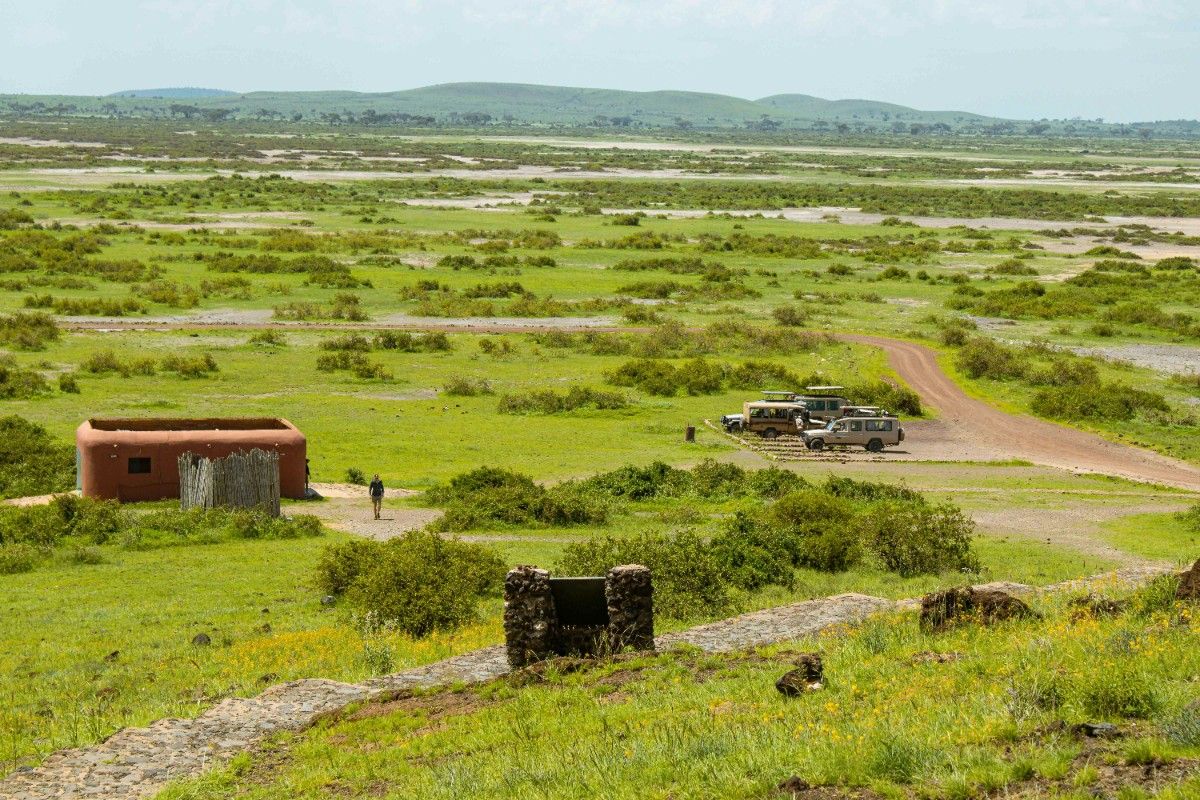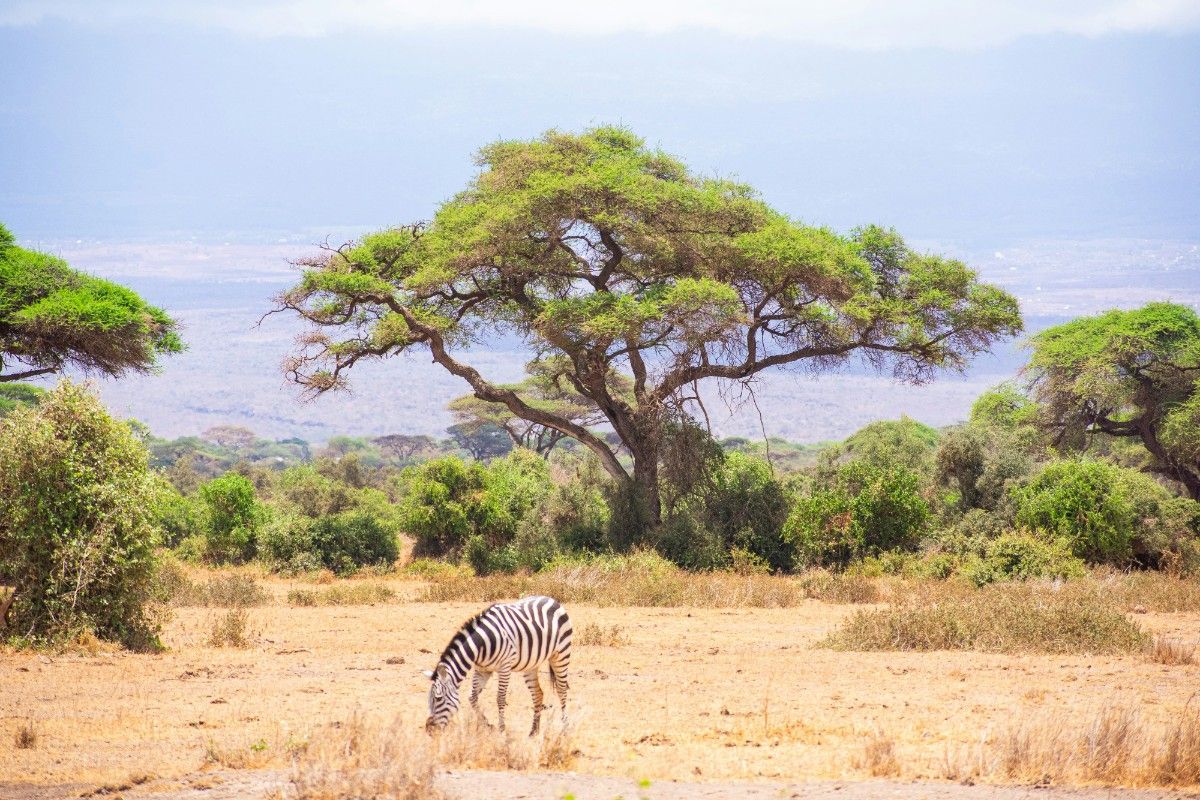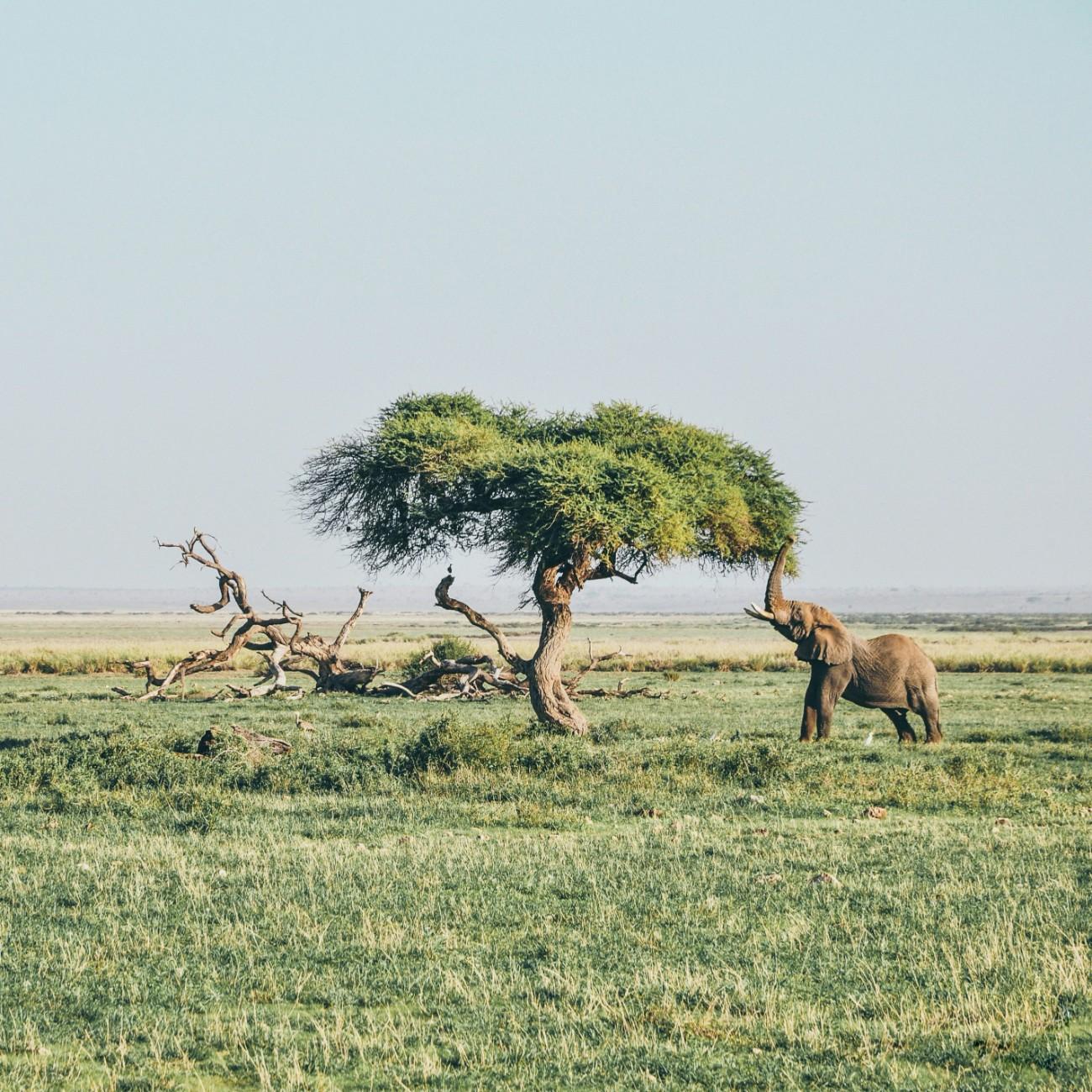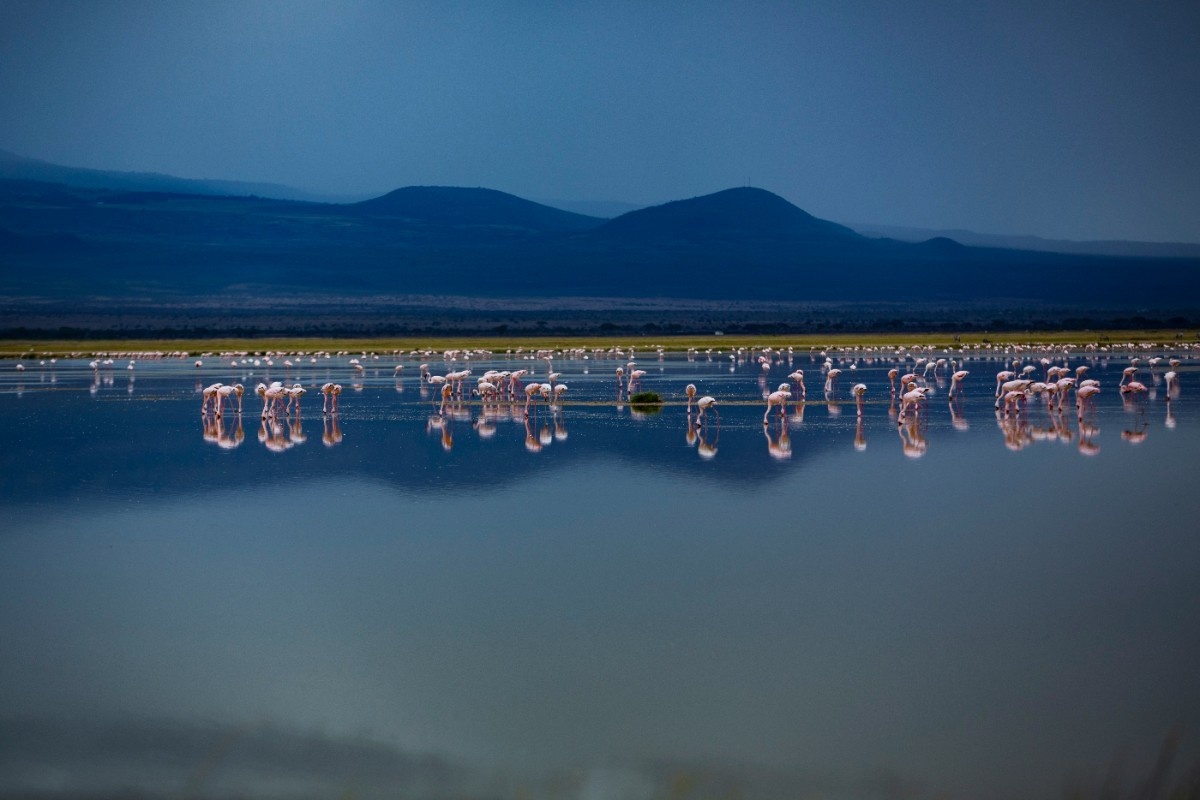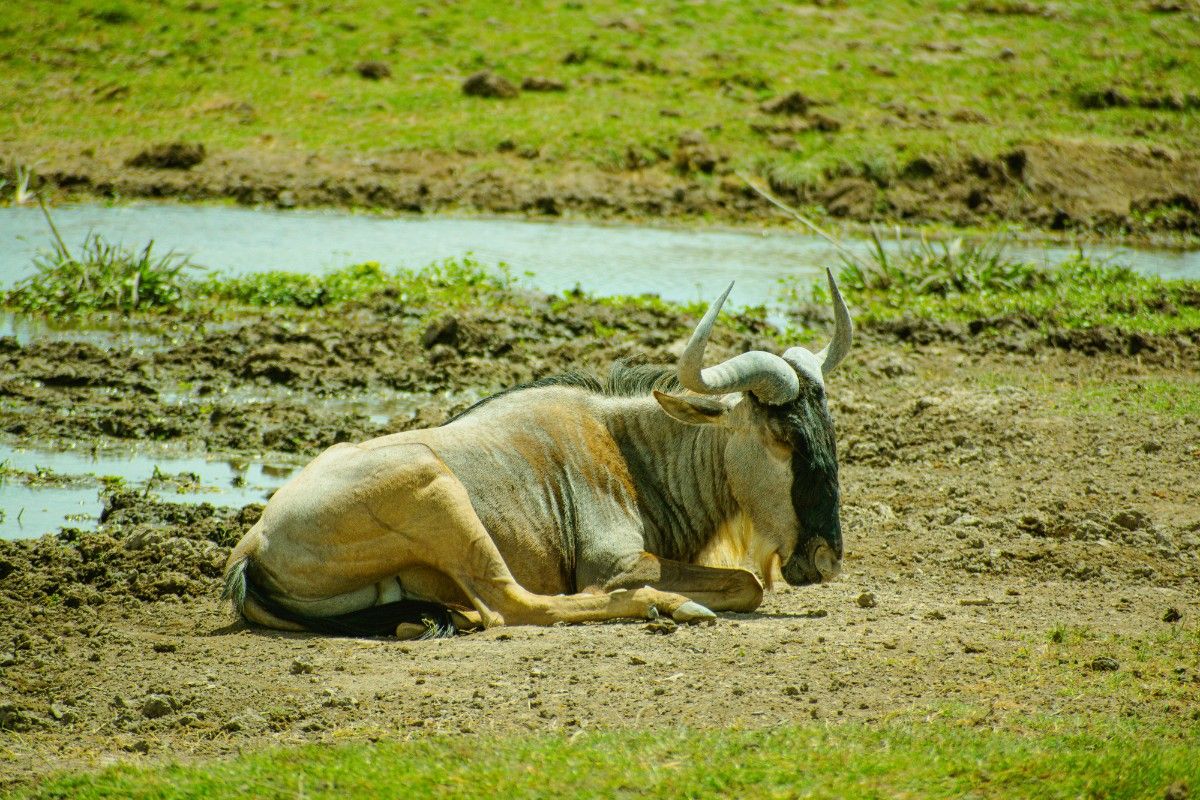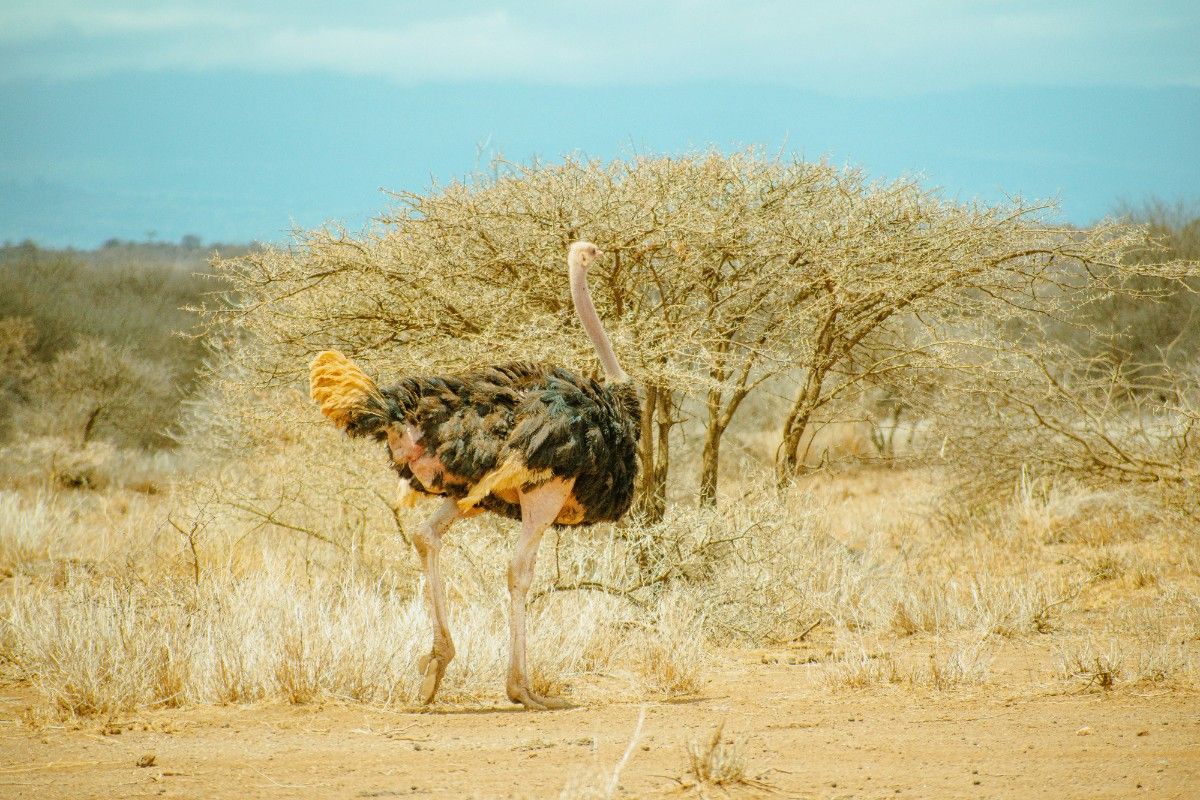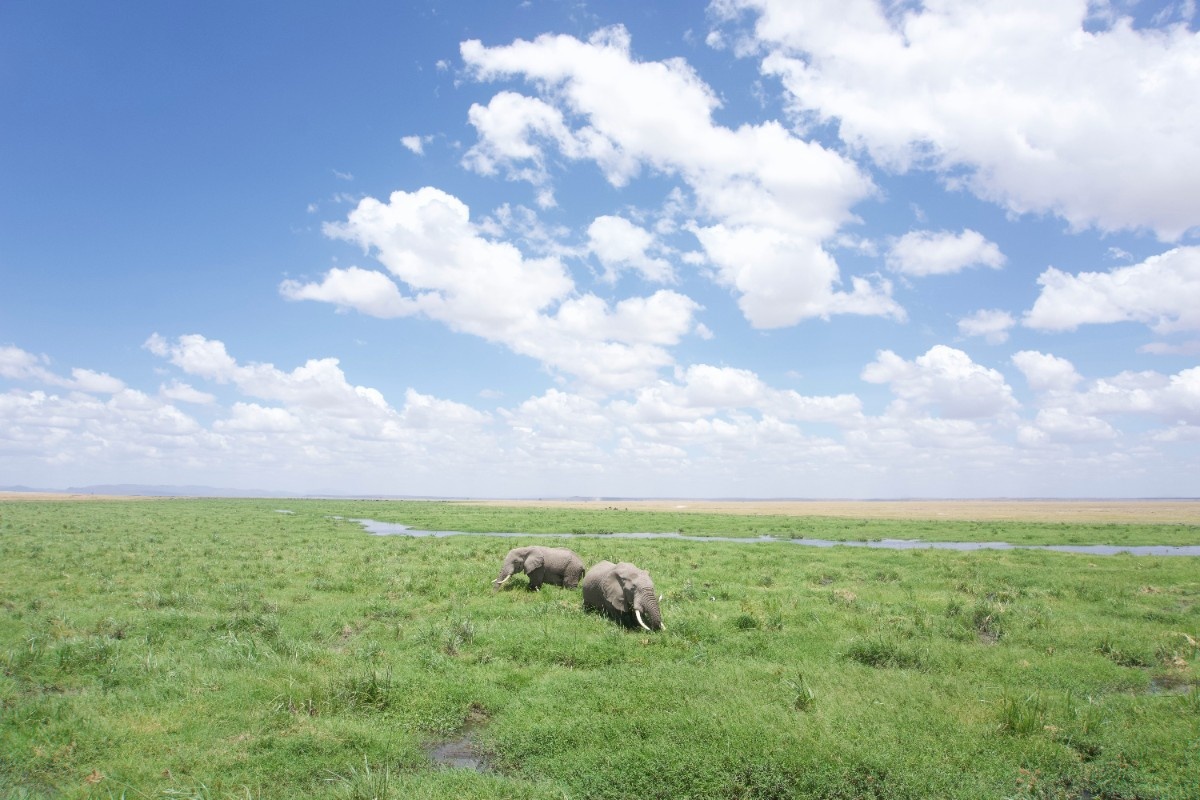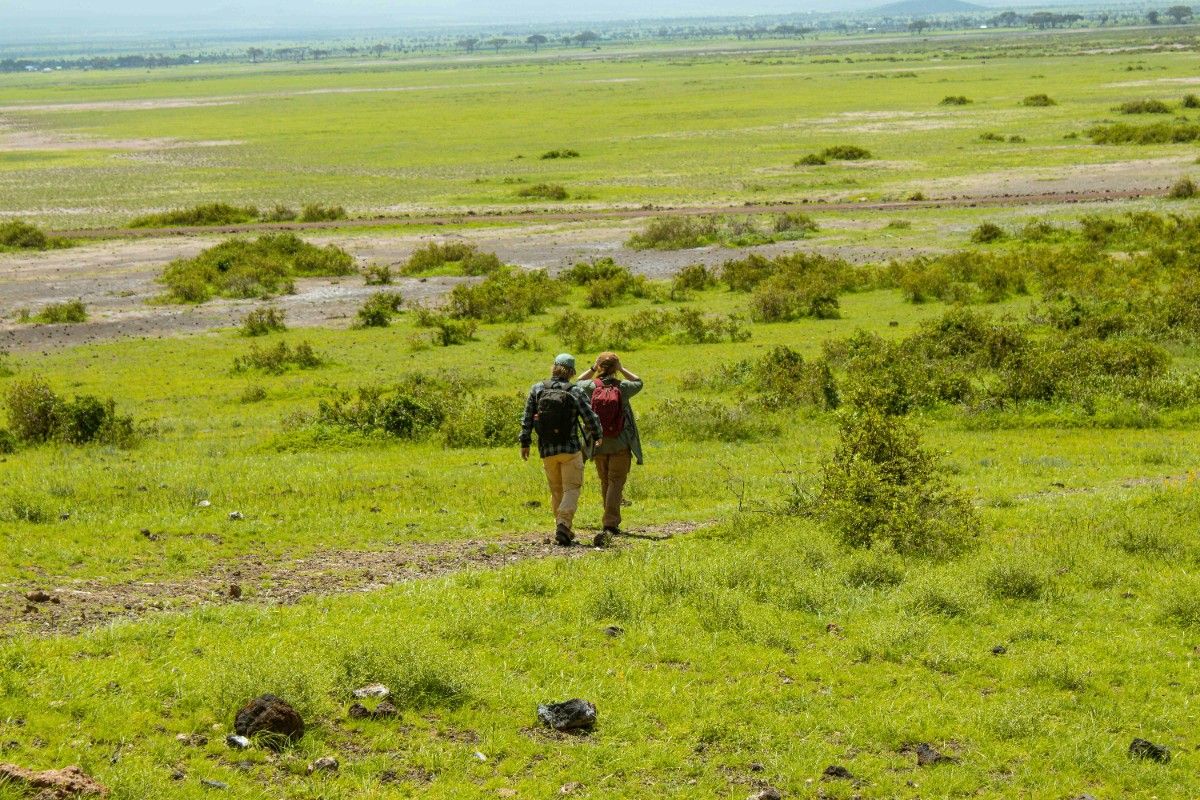Introduction to Amboseli National Park
Overview of Amboseli National Park
Amboseli National Park is a breathtaking wilderness located in the heart of Kenya, renowned for its diverse ecosystem, stunning landscapes, and exceptional wildlife encounters. Spanning an area of 392 square kilometres, this iconic park is one of Kenya's most popular tourist destinations, attracting visitors from around the world who come to marvel at its natural wonders. The park's name, "Amboseli," is derived from a Maasai word meaning "salty dust," which aptly describes the park's dry and dusty terrain during the dry season. Despite the seemingly harsh environment, Amboseli National Park is a haven for a wide array of flora and fauna, showcasing the resilience and adaptability of nature.
History and Establishment
The history of Amboseli National Park dates back to the early 20th century when it was designated as a wildlife reserve by the British colonial government. Recognising the area's ecological significance and the need for enhanced conservation efforts, the reserve was officially gazetted as a national park in 1974. This milestone marked a new chapter in the park's history, as it became a symbol of Kenya's commitment to preserving its natural heritage and promoting sustainable tourism. Over the years, Amboseli National Park has been at the forefront of wildlife conservation and research, with numerous studies and projects aimed at understanding and protecting its unique ecosystem.
Geographical Features and Ecosystem
One of the most striking features of Amboseli National Park is its awe-inspiring backdrop – the majestic Mount Kilimanjaro. Standing at 5,895 metres, this dormant volcanic mountain is the highest peak in Africa and provides a breathtaking backdrop to the park's landscapes. The sight of elephants grazing against the backdrop of the snow-capped Kilimanjaro is an iconic image that has captivated visitors from around the world. The park's ecosystem is primarily composed of savannah grasslands, dotted with acacia woodlands and wetlands. The Amboseli basin, which lies at the heart of the park, is fed by underground streams originating from Mount Kilimanjaro's melting snow. These streams create a network of swamps and marshes that provide a vital water source for the park's wildlife during the dry season. The combination of grasslands, woodlands, and wetlands creates a diverse mosaic of habitats that support a wide range of species, each adapted to thrive in this unique environment.
Wildlife in Amboseli National Park
Elephant Population and Research
Amboseli National Park is renowned for its large elephant population, which is one of the most studied in the world. These majestic creatures have been the subject of long-term research by the Amboseli Trust for Elephants, an organisation dedicated to the conservation and understanding of elephants in the park. The trust's work has provided invaluable insights into elephant behaviour, social dynamics, and the challenges they face in an ever-changing environment. Visitors to Amboseli National Park have the opportunity to observe these gentle giants up close as they traverse the park's dusty plains, often in large family groups led by a matriarch. The elephants of Amboseli are known for their impressive tusks, which are among the largest in Kenya. Watching them interact with one another, care for their young, and engage in playful behaviour is a truly humbling experience that highlights the complex social bonds within elephant societies.
Diverse Wildlife Species
In addition to its iconic elephant population, Amboseli National Park is home to a wide variety of other fascinating wildlife species. The park's open grasslands provide ideal grazing grounds for large herbivores such as zebras, wildebeests, and buffalos. These herds, in turn, attract an array of predators, including lions, cheetahs, and hyenas, creating a dynamic and thrilling ecosystem where the drama of life and death unfolds daily. The park's acacia woodlands are a haven for giraffe, impala, and the elusive leopard, while the wetlands attract a diverse array of birdlife, including flamingos, pelicans, and the striking crowned crane. Amboseli National Park is also home to several primate species, such as the yellow baboon and the vervet monkey, whose amusing antics often provide light-hearted entertainment for visitors.
Birdwatching Paradise
For birdwatchers, Amboseli National Park is a true paradise, boasting over 400 recorded bird species. The park's varied habitats support a rich avian diversity, from the colourful lilac-breasted roller to the majestic African fish eagle. The wetlands are particularly rewarding for birders, as they attract a wide range of water birds, including the lesser flamingo, African spoonbill, and the great white pelican. Guided birdwatching tours, led by experienced ornithologists, cater to both novice and seasoned birders, helping them to identify and appreciate the park's diverse avian fauna. Whether you're an avid birdwatcher or simply enjoy the beauty and melodies of these feathered creatures, Amboseli National Park offers an unforgettable birding experience.
Maasai Culture and Community
Traditional Way of Life
The Maasai people, an indigenous semi-nomadic pastoralist community, have called the Amboseli region home for centuries. Known for their distinctive red garments, intricate beadwork, and rich cultural heritage, the Maasai have coexisted with wildlife in the Amboseli National Park, developing a deep understanding and respect for the natural world. Their traditional way of life revolves around their cattle, which they rely on for sustenance, wealth, and social status. The Maasai's nomadic lifestyle allows them to move with their herds in search of fresh pastures and water sources, ensuring the long-term sustainability of the land. This close connection to nature has shaped their cultural identity and has been instrumental in the conservation of Amboseli's ecosystem, as they have helped to identify and protect critical wildlife corridors and dispersal areas.
Cultural Heritage and Traditions
The Maasai culture is steeped in traditions and customs that have been passed down through generations. Their social structure is based on age sets, with each generation undergoing initiation rituals and assuming specific roles and responsibilities within the community. The Maasai are known for their intricate beadwork, which is used to adorn their clothing, jewellery, and everyday objects. Each colour and pattern holds symbolic meaning, often representing the wearer's age, marital status, or social position. The Maasai also have a rich oral tradition, with stories, songs, and proverbs used to convey important life lessons and cultural values. Their traditional dances, characterised by jumping and rhythmic chanting, are a visual spectacle that showcases their physical prowess and cultural pride.
Community Involvement in Conservation and Tourism
In recent years, the Maasai community has become increasingly involved in wildlife conservation and ecotourism initiatives in Amboseli National Park. Recognising the importance of protecting their natural heritage and the potential benefits of sustainable tourism, many Maasai have found employment as park rangers, guides, and lodge staff. Their unique perspectives and traditional knowledge have greatly enriched the visitor experience, providing insights into the park's ecology and cultural significance. Some Maasai villages also welcome tourists, offering a glimpse into their traditional way of life through cultural performances, handicraft demonstrations, and guided nature walks. By supporting Maasai-led initiatives, tourists can contribute directly to the community's well-being and help to preserve their cultural heritage for future generations. This integration of Maasai culture into Amboseli's tourism framework not only provides valuable income opportunities for the local community but also fosters a greater appreciation for their unique way of life among visitors.
Conservation Efforts in Amboseli
Wildlife Protection and Management
Amboseli National Park has long been at the forefront of wildlife conservation efforts in Kenya, thanks to the dedication of various stakeholders, including the Kenya Wildlife Service, local communities, and international conservation organisations. One of the key focuses of these efforts has been the protection and management of the park's diverse wildlife populations. The Amboseli Elephant Research Project, which has been studying the park's elephant population since 1972, has provided invaluable insights into elephant behaviour, social dynamics, and the impacts of human activities on their well-being. The project's findings have informed conservation strategies not only in Amboseli but also across Africa, contributing to the development of effective elephant management and protection measures. Similar research and monitoring efforts have been undertaken for other iconic species, such as lions, cheetahs, and giraffes, to ensure their long-term survival in the park.
Community Engagement and Empowerment
Recognising that the success of wildlife conservation depends on the support and participation of local communities, various organisations have been working closely with the Maasai to develop sustainable livelihoods that are compatible with conservation goals. These initiatives include eco-friendly tourism ventures, such as community-owned lodges and campsites, which provide employment opportunities and generate income for the local community. Additionally, education and training programs have been implemented to equip Maasai youth with the skills needed to work in the tourism industry and become advocates for conservation. By empowering the local community to take an active role in the management and protection of Amboseli's natural resources, these efforts have fostered a sense of ownership and pride in the park's conservation success.
Habitat Restoration and Protection
Habitat loss and degradation pose significant threats to the biodiversity of Amboseli National Park. To address these challenges, the park's management has placed a strong emphasis on habitat restoration and protection. Efforts to combat habitat degradation include the removal of invasive plant species, which can outcompete native vegetation and disrupt the delicate balance of the ecosystem. The establishment of grass banks, which provide emergency forage for wildlife during droughts, has also been a crucial initiative in ensuring the resilience of the park's habitats. Additionally, the protection of critical water sources, such as the underground streams fed by Mount Kilimanjaro's melting snow, has been a key priority. By maintaining the integrity of Amboseli's diverse habitats, these conservation efforts have ensured that the park remains a viable home for its wide array of plant and animal species.
Tourism in Amboseli National Park
Game Drives and Wildlife Viewing
Tourism in Amboseli National Park revolves around the opportunity to witness the park's incredible wildlife in their natural habitat. Game drives are the most popular activity, allowing visitors to explore the park's diverse landscapes and encounter its iconic animals. Guided by experienced rangers or safari guides, visitors set out in 4x4 vehicles to traverse the park's vast expanse, searching for the Big Five (lion, leopard, elephant, buffalo, and rhinoceros) and other fascinating species. The open savannah plains provide excellent visibility, making it easier to spot wildlife from a distance. Early morning and late afternoon drives are particularly rewarding, as they coincide with the animals' peak activity periods and offer the best lighting conditions for photography. With its abundant elephant population and stunning backdrop of Mount Kilimanjaro, Amboseli National Park offers an unparalleled game viewing experience that leaves a lasting impression on all who witness it.
Guided Nature Walks and Birdwatching
For a more immersive experience, visitors to Amboseli National Park can opt for guided nature walks. Accompanied by armed rangers, these walks provide an opportunity to explore the park's ecosystem on foot, allowing for a closer connection with the wilderness. Visitors can learn about the park's diverse flora and fauna, discover hidden treasures like rare bird species or medicinal plants, and gain a deeper appreciation for the intricate web of life that sustains Amboseli's natural beauty. Guided nature walks also offer a chance to encounter smaller, often overlooked species and to witness the park's wonders from a different perspective. For birdwatching enthusiasts, Amboseli National Park is a true paradise, boasting over 400 recorded bird species. Guided birdwatching tours, led by experienced ornithologists, cater to both novice and seasoned birders, helping them to identify and appreciate the park's diverse avian fauna, from the colourful lilac-breasted roller to the majestic African fish eagle.
Cultural Visits and Maasai Interactions
Tourism in Amboseli National Park extends beyond wildlife experiences, offering visitors the chance to engage with the local Maasai community and learn about their rich cultural heritage. Cultural visits to Maasai villages provide a unique opportunity for tourists to interact with the indigenous people who have coexisted with wildlife in the Amboseli region for centuries. During these visits, guests can participate in traditional dances, marvel at the intricate beadwork and colourful attire, and gain insights into the Maasai way of life. Guided by local Maasai, visitors can take part in nature walks, learning about the medicinal and cultural significance of various plants and animals. These cultural experiences foster a deeper understanding and appreciation of the human dimension of conservation, highlighting the importance of involving local communities in the protection of their natural heritage. By supporting Maasai-led tourism initiatives, visitors contribute directly to the community's well-being and help to preserve their unique cultural identity for future generations.
Amboseli National Park's Location and Accessibility
Geographical Location
Amboseli National Park is located in southern Kenya, in the Loitoktok District of the Rift Valley Province. The park lies approximately 240 kilometres (150 miles) southeast of Nairobi, Kenya's capital city, and borders the Kajiado District to the east, the Machakos District to the north, and Tanzania to the south. Amboseli National Park is situated close to the Kenyan-Tanzanian border, with the stunning backdrop of Mount Kilimanjaro, Africa's highest peak, dominating the park's skyline. The park's ecosystem is primarily composed of savannah grasslands, acacia woodlands, and wetlands, which are fed by underground streams originating from Mount Kilimanjaro's melting snow. This unique combination of geographical features and diverse habitats makes Amboseli National Park a prime destination for wildlife enthusiasts and nature lovers alike.
Accessibility by Road
Amboseli National Park is easily accessible by road from Nairobi and other major cities in Kenya. Visitors can choose to drive themselves or hire a private vehicle with a driver-guide. The most common route from Nairobi is via the Mombasa Highway (A109), which takes approximately 4 to 5 hours, depending on traffic and road conditions. From the highway, travellers turn onto the C102 road at Sultan Hamud, heading towards Kimana, and then follow the C103 road leading to Meshanani Gate, the park's main entrance. The roads within the park are well-maintained, allowing for comfortable game drives and easy access to the various lodges and campsites. However, it is always advisable to check with the park authorities or tour operators for the latest information on road conditions and any potential detours, especially during the rainy seasons.
Accessibility by Air
For visitors short on time or seeking a more convenient and comfortable journey, flying to Amboseli National Park is an excellent option. The park has its own airstrip, the Amboseli Airport (AOS), which is serviced by several domestic airlines operating flights from Nairobi's Wilson Airport (WIL) and other major tourist destinations in Kenya, such as the Maasai Mara and the coast. The flight from Nairobi to Amboseli takes approximately 35 to 40 minutes, offering stunning aerial views of the park's landscapes and the majestic Mount Kilimanjaro. Upon arrival at the airstrip, visitors are usually greeted by representatives from their chosen lodge or camp, who provide transfer services to their respective accommodations. This seamless air travel experience allows visitors to maximise their time in the park, focusing on the incredible wildlife encounters and natural wonders that Amboseli National Park has to offer.
Amboseli National Park Lodges and Accommodations
Luxury Lodges
Amboseli National Park offers a range of accommodation options to suit various preferences and budgets, ensuring that every visitor can find their ideal home away from home in the wilderness. For those seeking a touch of luxury and ultimate comfort, the park boasts several high-end lodges that blend elegant accommodations with exceptional service and amenities. These lodges typically feature spacious, well-appointed rooms or tented suites with private balconies or verandas overlooking the park's stunning landscapes. Guests can indulge in fine dining experiences, often featuring gourmet cuisine prepared with locally-sourced ingredients and served in beautiful settings with breathtaking views of Mount Kilimanjaro or the surrounding savannah. Many luxury lodges also offer additional amenities such as swimming pools, spa treatments, and guided activities, ensuring that guests can unwind and rejuvenate between their wildlife adventures. Examples of luxury lodges in Amboseli National Park include the Amboseli Serena Safari Lodge, Ol Tukai Lodge, and Tortilis Camp, each offering a unique blend of opulence, comfort, and wilderness immersion.
Tented Camps and Eco-Lodges
For visitors seeking a more authentic and immersive safari experience, Amboseli National Park offers a selection of tented camps and eco-lodges. These accommodations prioritise environmental sustainability and a closer connection to nature, without compromising on comfort and quality. Tented camps typically feature spacious, well-appointed tents with en-suite bathrooms, comfortable bedding, and private verandas with stunning views of the surrounding wilderness. Eco-lodges, on the other hand, are constructed using locally-sourced, environmentally-friendly materials and are designed to minimise their ecological footprint. Both tented camps and eco-lodges often employ solar power, water conservation systems, and waste management practices to reduce their impact on the environment. Guests at these accommodations can enjoy a more intimate and authentic experience, with opportunities for guided nature walks, bush dinners under the stars, and close encounters with Amboseli's incredible wildlife. Popular tented camps and eco-lodges in the park include Porini Amboseli Camp, Satao Elerai Camp, and Kibo Safari Camp, each offering a unique blend of comfort, sustainability, and wilderness immersion.
In Summary
Amboseli National Park, nestled in the heart of Kenya, is a true gem that showcases the best of Africa's natural wonders. From its breathtaking landscapes dominated by the majestic Mount Kilimanjaro to its diverse and abundant wildlife, including the iconic elephant population, Amboseli offers visitors an unparalleled opportunity to witness the raw beauty and power of the wilderness. The park's unique ecosystem, comprising savannah grasslands, acacia woodlands, and life-sustaining wetlands, supports an incredible array of flora and fauna, making it a paradise for nature enthusiasts, birdwatchers, and photographers alike.
Beyond its natural treasures, Amboseli National Park is also a living testament to the rich cultural heritage of the Maasai people, who have coexisted harmoniously with the wildlife for generations. Visitors have the opportunity to engage with the local community, learn about their traditional way of life, and gain a deeper appreciation for the intricate relationship between humans and nature. By supporting Maasai-led tourism initiatives and participating in cultural experiences, visitors contribute directly to the well-being of the local community and the preservation of their unique cultural identity.
As a pioneer in wildlife conservation and sustainable tourism, Amboseli National Park serves as a model for balancing the protection of natural resources with the needs of local communities. Through the tireless efforts of park authorities, conservation organisations, and community stakeholders, Amboseli continues to thrive as a bastion of biodiversity and a symbol of hope for the future of Africa's wild spaces.
With its convenient location, well-developed infrastructure, and wide range of accommodation options, from luxury lodges to eco-friendly tented camps, Amboseli National Park is an accessible and inclusive destination that caters to the diverse needs and preferences of its visitors. Whether seeking a lavish safari experience or a more intimate connection with nature, visitors to Amboseli can find their perfect base from which to explore the park's wonders and create unforgettable memories.
In a world where wild spaces are increasingly under threat, Amboseli National Park stands as a beacon of conservation success and a reminder of the vital importance of protecting our planet's natural heritage. By visiting this extraordinary park, supporting its conservation efforts, and spreading awareness of its significance, each and every one of us can play a part in ensuring that the magic of Amboseli endures for generations to come. As we marvel at the sight of elephants roaming freely against the backdrop of Mount Kilimanjaro, let us be inspired to become stewards of the wild and advocates for a future in which humans and nature thrive together in harmony.
Related Articles

Let us know you agree to cookies
We use marketing, analytical and functional cookies as well as similar technologies to give you the best experience. Third parties, including social media platforms, often place tracking cookies on our site to show you personalised adverts outside of our website.
We store your cookie preferences for two years and you can edit your preferences via ‘manage cookies’ or through the cookie policy at the bottom of every page. For more information, please see our cookie policy.
